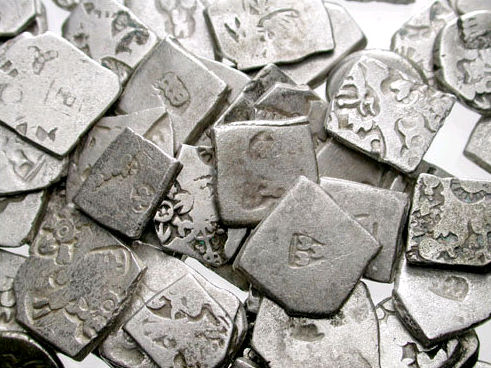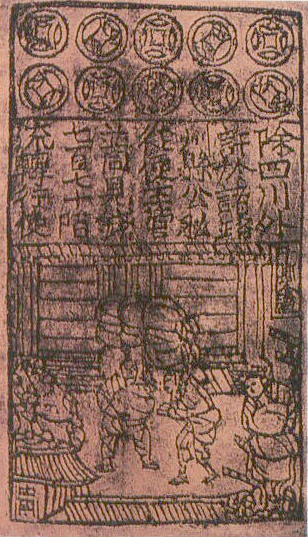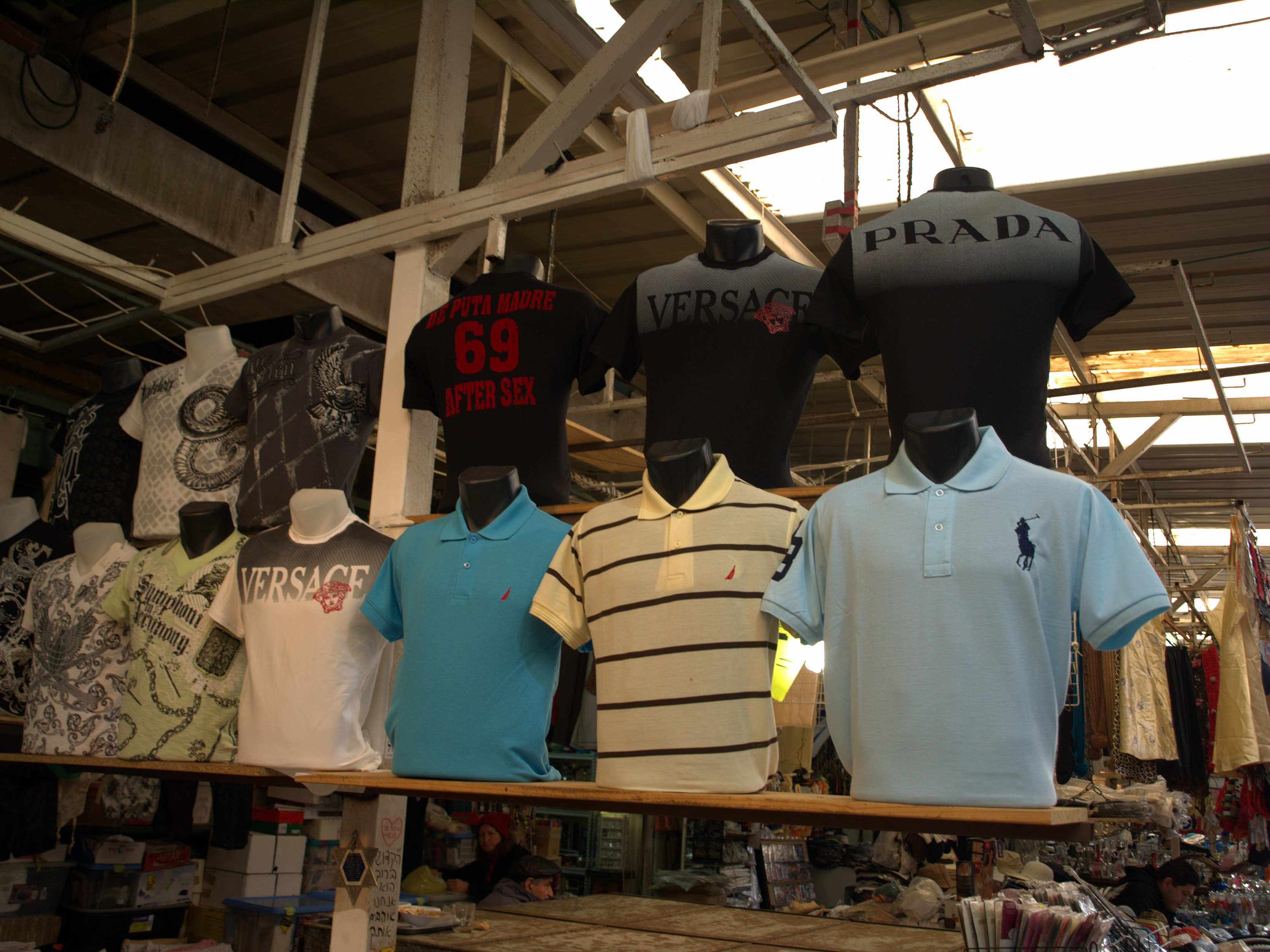|
Countermark
A countermarked, punchmarked or counterstamped coin is a coin that has had some additional mark or symbol punched into it at some point after it was originally produced while in circulation. This practice is now obsolete. Countermarking can be done for a variety of reasons. If the currency is reformed, existing coins may be rendered void. In this situation, coins already in circulation could be marked with the new value (according to the new currency system). The life span of existing coins could thus be extended, which might under some circumstances be a cheaper alternative to recalling the coins, melting them and striking replacements. Similarly, foreign coins could be marked as legal or accepted currency, thus allowing them to circulate in the area where they were countermarked. Countermarking can also be done for political reasons, i.e. a new state or régime demonstrating its authority by countermarking coins issued by the previous state. Some experts recommend not to use th ... [...More Info...] [...Related Items...] OR: [Wikipedia] [Google] [Baidu] |
Chop Marks On Coins
Chop marks on coins are Chinese characters stamped or embossed onto coins by merchants in order to validate the weight, authenticity and Fineness, silver content of the coin. Depending on particular technique coins said to have been "chopmarked", "countermarked" and "counterstamped". The earliest chopmarks are found on bronze coins of the Wanli Emperor, Wanli era of the Ming Dynasty. These have become known as "Manila Chopmarks" and are believed to have been marked in Manila by Chinese merchants. The marks are usually small and unclear but occasionally full Chinese characters, or small fish symbols, can be found. The character Tian (天), meaning "Heaven" is known from at least one example. The purpose of such chopmarks has been debated, with one theory suggesting it was a way to mark the premium full sized cash coins when compared to the diminutive small picis cash which were minted during the Wanli era. Nevertheless, these Manila Chopmarks have proven to be the earliest chop ... [...More Info...] [...Related Items...] OR: [Wikipedia] [Google] [Baidu] |
Numismatic Terminology
This glossary of numismatics is a list of definitions of terms and concepts relevant to numismatics and coin collecting, as well as sub-fields and related disciplines, with concise explanations for the beginner or professional. Numismatics (ancient Greek: , meaning "monetary") is the scientific study of money and its history in all its varied forms. While numismatists are often characterized as studying coins, the discipline also includes the study of other types of money, such as banknotes, stock certificates, medals, medallions, and tokens (also referred to as exonumia). Sub-fields and related fields of numismatics include: * Exonumia, the study of coin-like objects such as token coins and medals, and other items used in place of legal currency or for commemoration. * Notaphily, the study of paper money or banknotes. * Philately, the study of postage stamps. * Scripophily, the study and collection of company share certificates and bonds. A B ... [...More Info...] [...Related Items...] OR: [Wikipedia] [Google] [Baidu] |
Punch-marked Coins
Punch-marked coins were a type of karshapana or Ancient Indian coinage, also known as ''Aahat'' (''stamped'') ''coins'', dating to between about the 6th and 2nd centuries BC. It was of irregular shape. These coins are found over most parts of subcontinent and remained in circulation till the early centuries CE. History Janapada Coins The study of the relative chronology of these coins has successfully established that the first punch-marked coins initially only had one or two punches, with the number of punches increasing over time. 19th-century proposals which suggested an origin from as early as 1000 BC, independent of the introduction of coins in Asia Minor, are "no longer given any credence". According to Osmund Bopearachchi, the first punch-marked coins in the Indian Subcontinent may have been minted around the 6th century BC by the Mahajanapadas of the Indo-Gangetic Plain. These coins were produced by impressing single punches individually. According to E. J. R ... [...More Info...] [...Related Items...] OR: [Wikipedia] [Google] [Baidu] |
Chopmarks
In the Sinosphere, seals (stamps) can be applied on objects to establish personal identification. They are commonly applied on items such as personal documents, office paperwork, contracts, and art. They are used similarly to signatures in the West. Unlike in the West, where wax seals are common, Sinosphere seals are used with ink. Of Chinese origin, the process soon spread beyond China and across East and Southeast Asia. Various countries in these regions currently use a mixture of seals and hand signatures, and, increasingly, electronic signatures. Chinese seals are typically made of stone, sometimes of metals, wood, bamboo, plastic, or ivory, and are typically used with red ink or cinnabar paste ( zh, c=朱砂, p=zhūshā). The word 印 ("yìn" in Mandarin, "in" in Japanese and Korean, "ấn" and "in" in Vietnamese) specifically refers to the imprint created by the seal, as well as appearing in combination with other morphemes in words related to any printing, as in the ... [...More Info...] [...Related Items...] OR: [Wikipedia] [Google] [Baidu] |
Quarter Eagle
The quarter eagle is a gold coin that was issued by the United States with a value of two hundred and fifty cents, or two dollars and fifty cents. It was given its name in the Coinage Act of 1792, as a derivation from the US ten-dollar Eagle (United States coin), eagle coin. History The quarter eagle denomination (currency), denomination was struck at the main mint (coin), mint at Philadelphia Mint, Philadelphia (1796–1929), and branch mints in Charlotte Mint, Charlotte (1838–1860), New Orleans Mint, New Orleans (1839–1857 only), Dahlonega Mint, Dahlonega (1839–1859), San Francisco Mint, San Francisco (1854–1879), and Denver Mint, Denver (1911–1925). Years were skipped at the various mints, with no coins at all made from 1809–1820 and 1916–1924. The first issues weighed at .9167 fineness. This was modified to and at .8992 fineness by the Coinage Act of 1834. The soon-to-follow Coinage Act of 1837 established a fineness of .900, meaning that 1837 and later qua ... [...More Info...] [...Related Items...] OR: [Wikipedia] [Google] [Baidu] |
Inflation
In economics, inflation is an increase in the average price of goods and services in terms of money. This increase is measured using a price index, typically a consumer price index (CPI). When the general price level rises, each unit of currency buys fewer goods and services; consequently, inflation corresponds to a reduction in the purchasing power of money. The opposite of CPI inflation is deflation, a decrease in the general price level of goods and services. The common measure of inflation is the inflation rate, the annualized percentage change in a general price index. Changes in inflation are widely attributed to fluctuations in Real versus nominal value (economics), real demand for goods and services (also known as demand shocks, including changes in fiscal policy, fiscal or monetary policy), changes in available supplies such as during energy crisis, energy crises (also known as supply shocks), or changes in inflation expectations, which may be self-fulfilling. Moderat ... [...More Info...] [...Related Items...] OR: [Wikipedia] [Google] [Baidu] |
Currency Production
A currency is a standardization of money in any form, in use or circulation as a medium of exchange, for example banknotes and coins. A more general definition is that a currency is a ''system of money'' in common use within a specific environment over time, especially for people in a nation state. Under this definition, the British Pound sterling (£), euros (€), Japanese yen (¥), and U.S. dollars (US$) are examples of (government-issued) fiat currencies. Currencies may act as stores of value and be traded between nations in foreign exchange markets, which determine the relative values of the different currencies. Currencies in this sense are either chosen by users or decreed by governments, and each type has limited boundaries of acceptance; i.e., legal tender laws may require a particular unit of account for payments to government agencies. Other definitions of the term ''currency'' appear in the respective synonymous articles: banknote, coin, and money. This article use ... [...More Info...] [...Related Items...] OR: [Wikipedia] [Google] [Baidu] |
Overprint
An overprint is an additional layer of text or graphics added to the face of a Postage stamp, postage or revenue stamp, postal stationery, banknote or Ticket (admission), ticket after it has been Printing, printed. Post offices most often use overprints for internal administrative purposes such as accounting but they are also employed in public mail. Well-recognized varieties include Commemorative stamp, commemorative overprints which are produced for their public appeal and command significant interest in the field of philately. Surcharges The term "surcharge" in philately describes any type of overprint that alters the price of a stamp.Williams & Williams, p. 258. Surcharges raise or lower the face value of existing stamps when prices have changed too quickly to produce an appropriate new issue, or simply to use up surplus stocks. Any overprint which restates a stamp's face value in a new currency is also described as a surcharge. Some postal systems have resorted to surch ... [...More Info...] [...Related Items...] OR: [Wikipedia] [Google] [Baidu] |
Counterfeit
A counterfeit is a fake or unauthorized replica of a genuine product, such as money, documents, designer items, or other valuable goods. Counterfeiting generally involves creating an imitation of a genuine item that closely resembles the original to deceive others into believing it is authentic. Counterfeit products are often made to take advantage of the higher value of the original product, typically using lower-quality materials or production methods. Counterfeit food, drinks, medicines, and personal care products can contain harmful or inactive ingredients, causing anything from mild issues to serious, life-threatening ones. Counterfeit footwear, clothing, and accessories have been found to contain high levels of lead, arsenic, and phthalates. Forgery of money or government bonds Counterfeit money is currency that is produced without the legal sanction of the state or government; this is a crime in all jurisdictions of the world. The United States Secret Service, mostly ... [...More Info...] [...Related Items...] OR: [Wikipedia] [Google] [Baidu] |
Overstrike (numismatics)
In numismatics, an overstrike describes a situation in which an existing coin rather than a blank is struck with a new design. This practice is now obsolete and generally occurred for two purposes. Overstriking was sometimes done for technical reasons when a first strike is unsatisfactory, or accidentally if the blank slips out of place or if the Die (manufacturing), dies judder, resulting in a slight doubling of the design. However, sometimes old or worn coins were overstruck with new designs by later rulers or foreign states. In the ancient world, use of overstrikes was not uncommon, since the manufacture of Planchet, flans was resource consumptive; thus a foreign or outdated coin could be overstruck with less investment than new mint (coin), mintage. Evidence of overstriking appears as early as about 500 Before Christ, BC when coins of Aegina were overstruck by the ancient city of Kydonia on Crete. In this case and many others, the overstrike can be a valuable aid to dating a ... [...More Info...] [...Related Items...] OR: [Wikipedia] [Google] [Baidu] |
Peruvian Sol
The sol (; plural: soles; currency sign: S/) is the currency of Peru; it is subdivided into 100 ''céntimos'' ("cents"). The ISO 4217 currency code is PEN. The sol replaced the Peruvian inti in 1991 and the name is a return to that of Peru's historic currency, as the previous incarnation of sol was in use from 1863 to 1985. Although ''sol'' in this usage is derived from the Latin '' solidus'' (), the word also means "sun" in Spanish. There is thus a continuity with the old Peruvian inti, which was named after Inti, the Sun God of the Incas. At its introduction in 1991, the currency was officially called ''nuevo sol'' ("new sol"), until November 13, 2015, when Peru's Congress voted to rename the currency simply ''sol''. History Currencies in use before the current Peruvian sol include: * The '' Spanish colonial real'' from the 16th to 19th centuries, with 8 reales equal to 1 peso. * The '' Peruvian real'' from 1822 to 1863. Initially worth peso, ''reales'' worth peso wer ... [...More Info...] [...Related Items...] OR: [Wikipedia] [Google] [Baidu] |
Guatemalan Peso
The ''peso'' was the currency of Guatemala between 1859 and 1925. History The peso replaced the '' real'', with 1 peso = 8 reales. In 1869, the ''centavo'' was introduced, worth one hundredth of a peso, but the real continued to be produced until 1912, when Guatemala fully decimalized. In 1870, the peso was pegged to the French franc at a rate of 1 peso = 5 francs. However, convertibility was suspended in 1895, and as more pesos were issued as fiat money, the peso's value fell considerably. The peso was replaced by the ''quetzal Quetzals () are strikingly colored birds in the trogon family. They are found in forests, especially in humid highlands, with the five species from the genus ''Pharomachrus'' being exclusively Neotropical, while a single species, the eared quet ...'' in 1925 at the rate of 60 pesos = 1 quetzal. Coins Silver coins were initially issued in denominations of ¼, ½, 1, 2 and 4 reales and 1 peso, whilst gold coins were issued in denominations of 4 reales, 1 ... [...More Info...] [...Related Items...] OR: [Wikipedia] [Google] [Baidu] |





